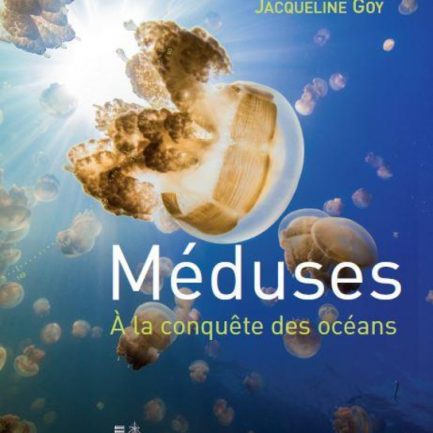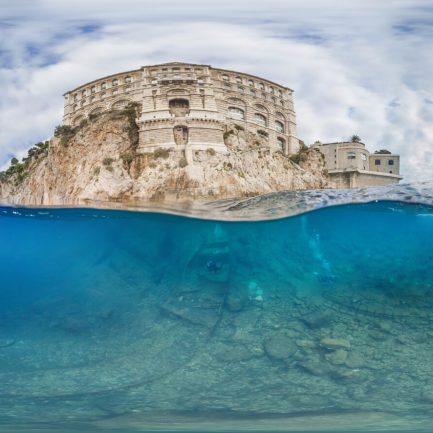The big family of jellyfish
- Home
- Actualités
- Jellyfish a big family
Not everything that is gelatinous is a jellyfish!
In English, the term jellyfish most often describes the whole of the gelatinous plankton which includes, in addition to jellyfish, other animals such as siphonophores (physalies…), thaliaceans (salps, pyrosomes…) and ctenophores (sea gooseberries, beroes…). As far as jellyfish are concerned, there are four main groups according to their life cycle.
Is classifying jellyfish an impossible task?
Their size varies from a few millimetres to two metres in diameter, their tentacles can be non-existent or numerous and measure several tens of metres.
Their shapes are varied: round, square, flat, domed, massive… Their edges can be smooth or lobed.
Depending on the species, the oral arms may be smooth, scalloped or cauliflower-like.
Scyphomedus has generally a free life stage and a fixed life stage. There are 190 known species, including Pelagia noctiluca and Aurelia aurita.
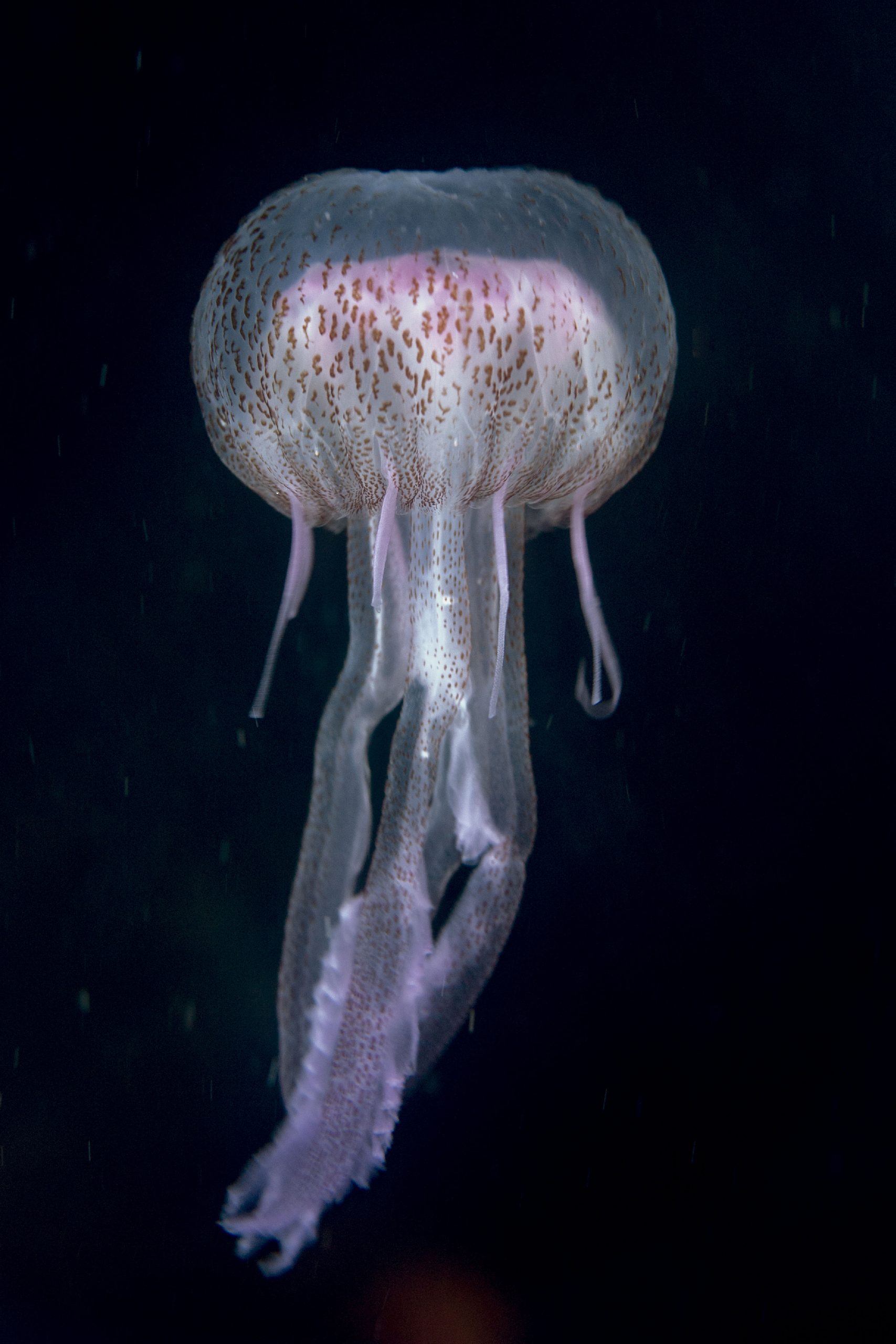

What are the differences between the four groups?
There are 840 species of Hydromedus, of which only 20% have a known life cycle.
They have a fixed stage called polyp and a free stage called jellyfish, such as equorae and velella.
Concentrations of velella(Velella velella), also known as St. John’s barks, are often observed in June at the time of the summer solstice.
After a storm, they can be found stranded by the thousands along the beaches.
Provided you are not allergic, the vellum is not dangerous for humans.
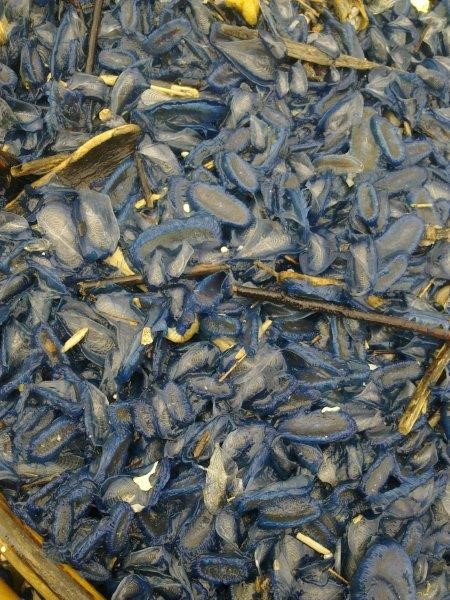
Rare and enigmatic jellyfish
With their cubic umbrella, they are the most dangerous of all.
Of the 40 or so species, only 10% have a known life cycle.
Among the cubomedus, the famous Chironex fleckeri, known as the “sea sting”, “sea wasp” or “hand of death”, lives in the waters of the North Australian and South-East Asian coasts.
The species Carybdea marsupialis is sometimes found in summer in the warm temperate waters of the North Atlantic Ocean and the Mediterranean.
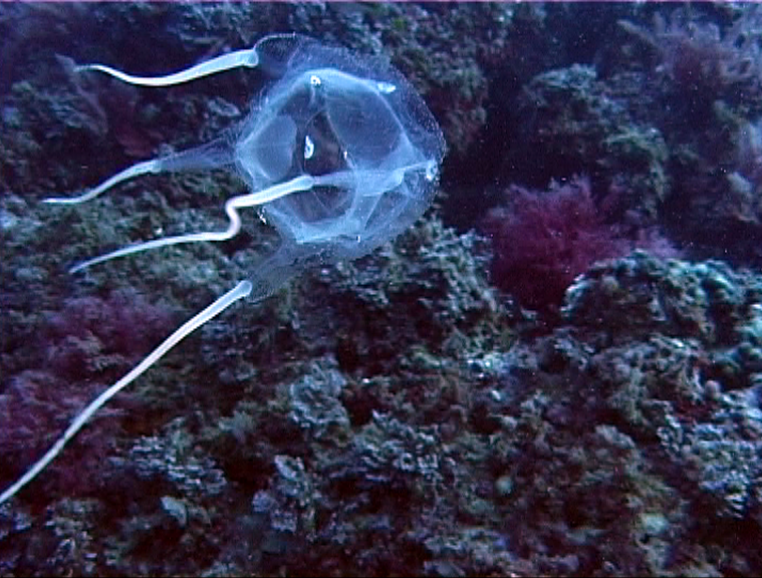
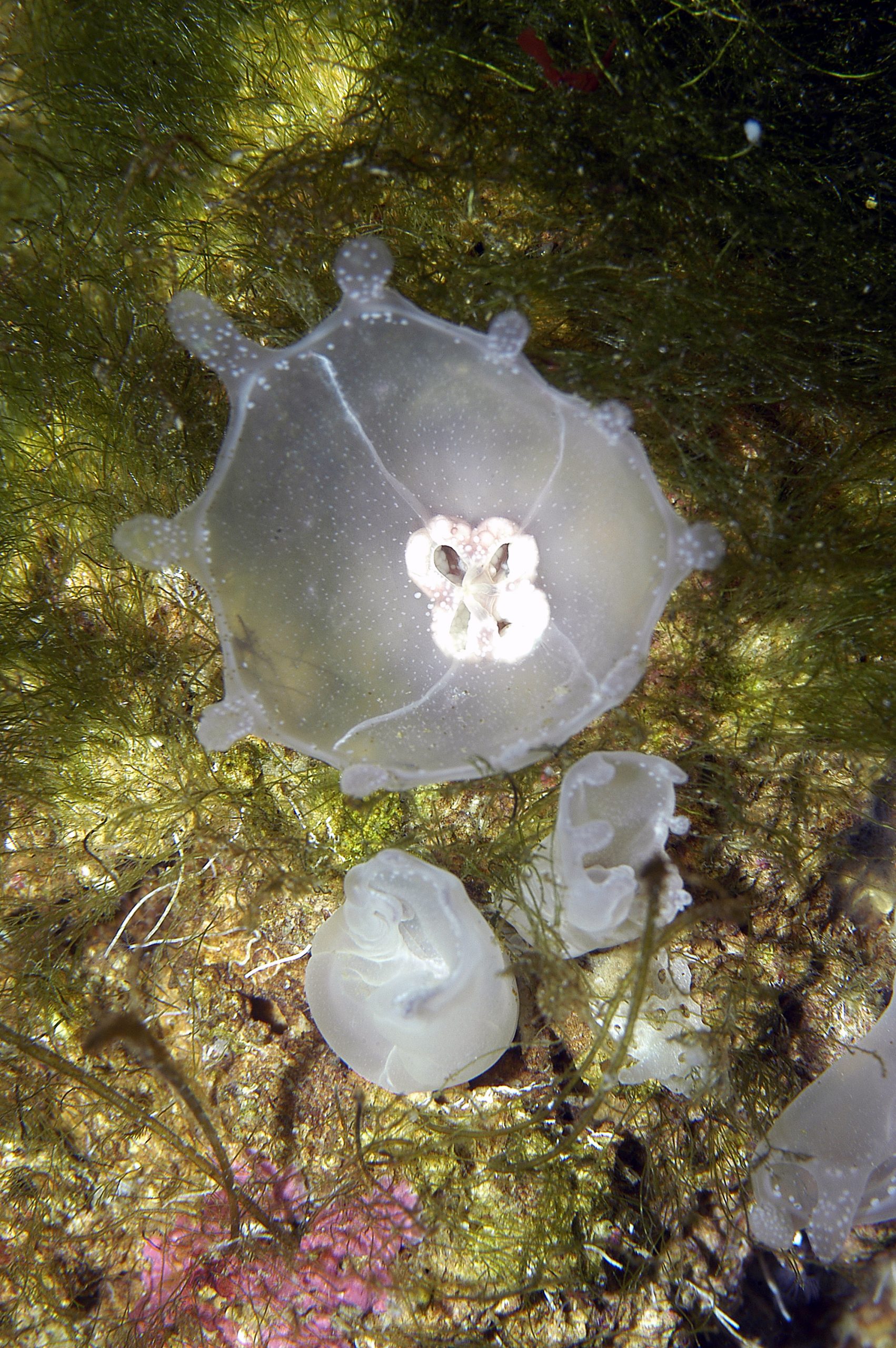
RARE AND ENIGMATIC JELLYFISH, THE STAUROMEDUS
The fourth very special group consists of about twenty species that live attached to the ground or to a wall, and do not have a free stage.
A rare stauromedusa, Lipkea ruspoliana, was identified in 1998, in the aquariums of the Oceanographic Museum of Monaco. It had never been found in the Mediterranean since it was first described in 1886 by Carl Vogt, from a specimen fished off the northwest coast of Sardinia. The Japanese specialist Tohru Uchida considers it to be the ancestral form of all Cnidarians!
In terms of evolution, Lipkea is to jellyfish what the coelacanth fish is to vertebrates.







